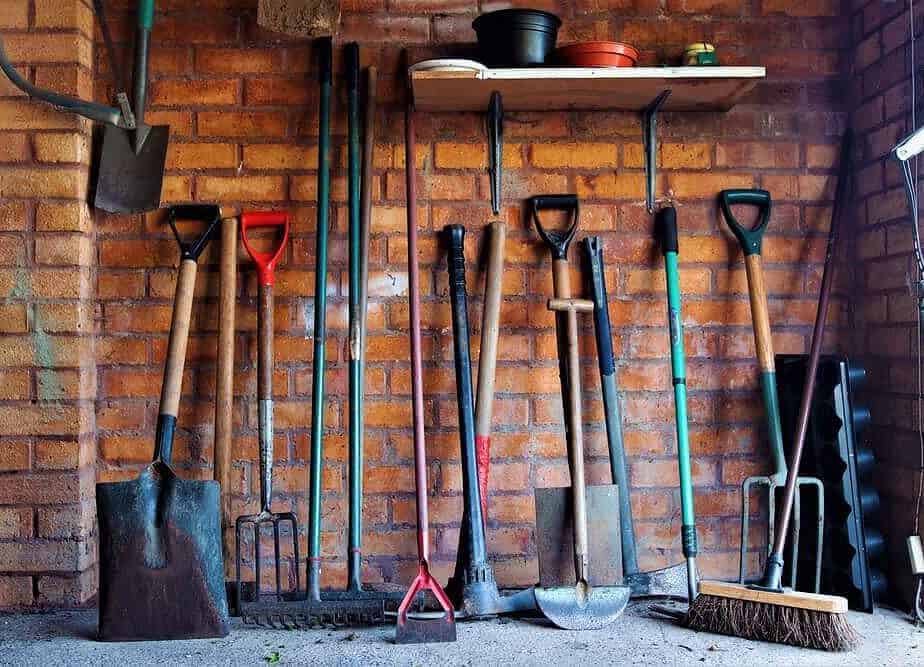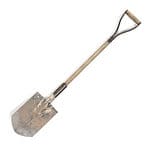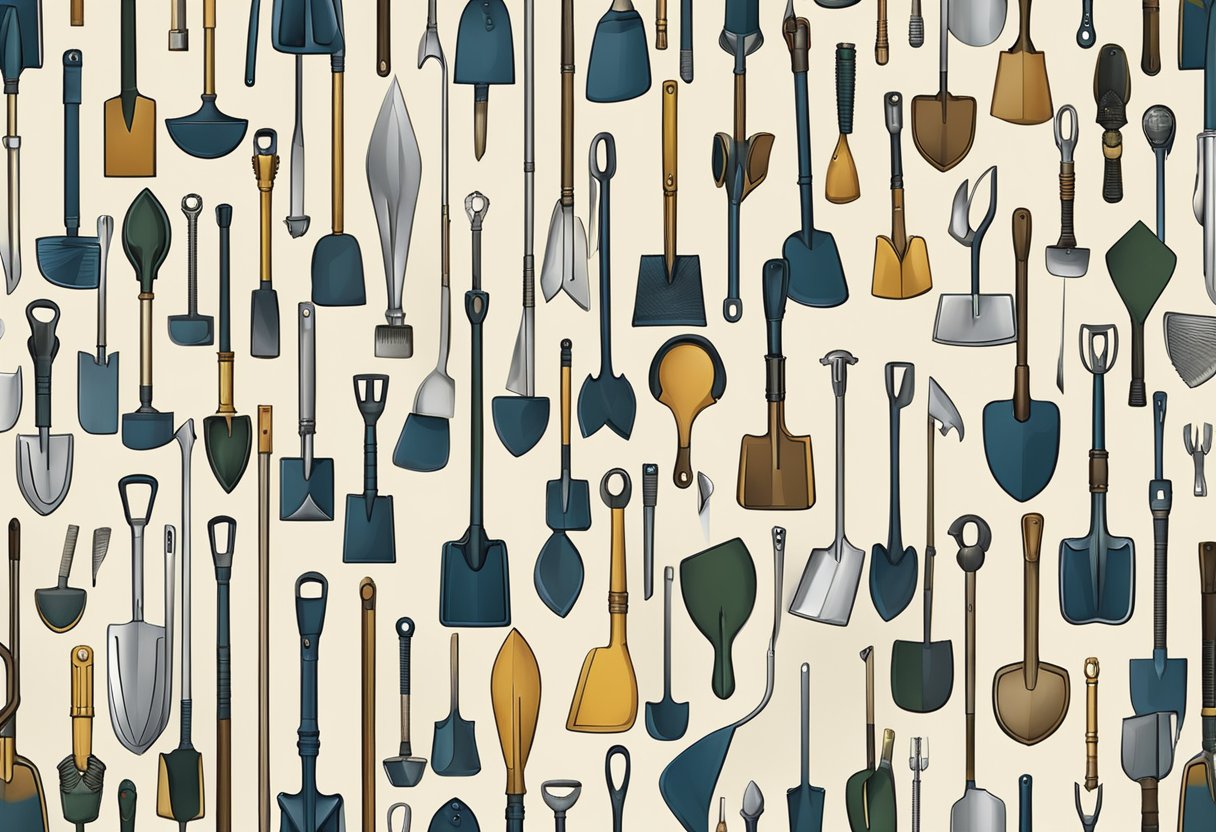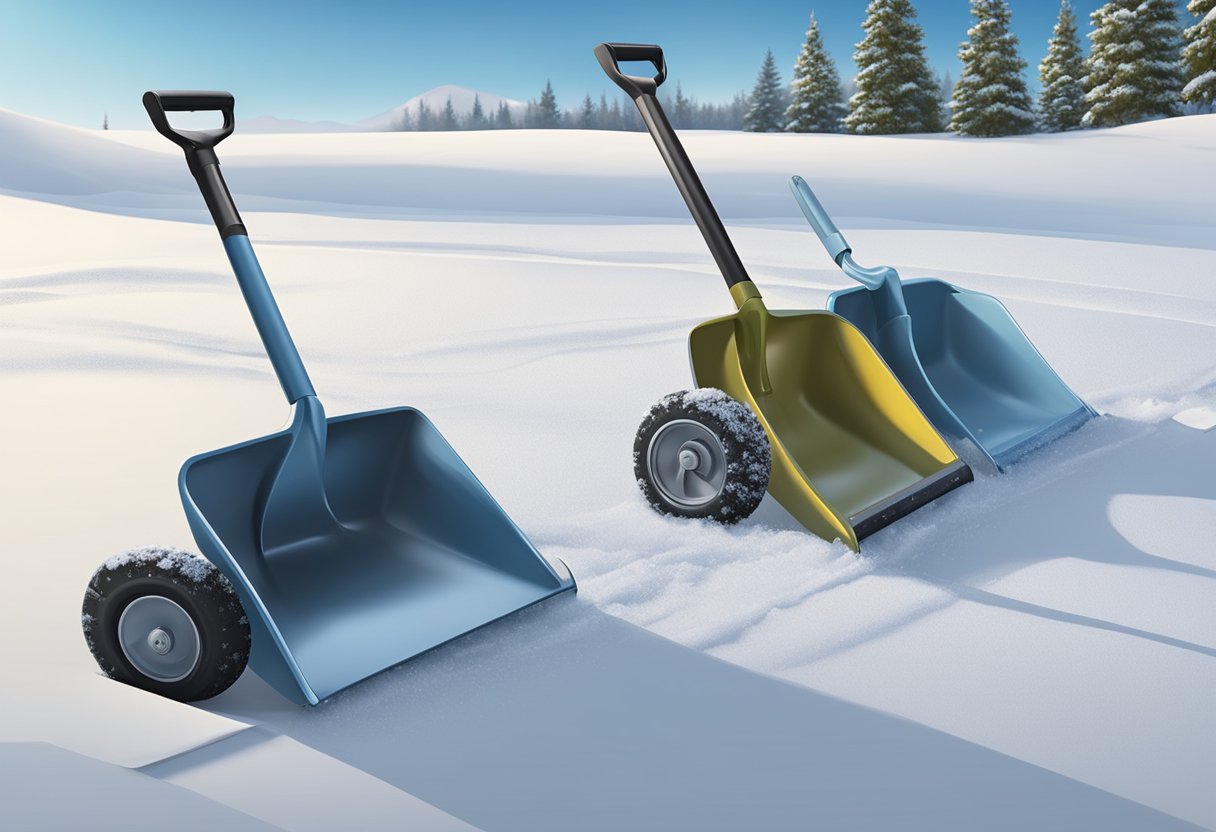No one shovel handle is ideal for everyone. Some prefer a traditional wood handle, while others find the lighter weight and increased durability of a fiberglass or composite shovel handle more advantageous. Each material has its advantages and disadvantages.
Table of Contents
Wood Shovel Handles
The most common type of shovel handle is wooden. Wood handles have been used for centuries and are still the preferred choice of many professional shoeless today. One advantage of using a wood handle is that it provides greater control and overall balance of the shovel. The weight of the wood handle also gives the shovel more stability, making it less likely to tip over.
Another advantage of using a wood handle is that it is easier on the hands. The smooth surface of the wood is gentle on the skin and doesn’t cause as much friction as a metal or plastic shovel handle would. Wood handles are also generally cheaper than their fiberglass or composite counterparts.
Disadvantages of using a wood shovel handle include that they are more susceptible to breaking and can splinter if not correctly maintained. In addition, your wood handle can also crack from exposure to extreme temperatures if you live in a cold climate.
Fiberglass Shovel Handles
Fiberglass shovel handles are becoming increasingly popular due to their lighter weight and increased durability. Fiberglass handles are made from an extruded resin that is both strong and light, making them less likely to break than wood handles and reducing the risk of injury if the handle snaps while in use.
Another advantage of using a fiberglass shovel handle is that they are not affected by extreme temperatures like wood handles can be. This means you can use your fiberglass shovel in any weather conditions without worrying about the handle cracking or breaking.
Disadvantages of using a fiberglass shovel handle include that they are more expensive than wood handles and don’t provide as much control over the shovel. The lack of control is due to the counterbalance weight, or in this case, the lack of weight of the handle. Additionally, some people find that the slippery surface of the fiberglass handle makes it more challenging to hold on to, especially when your hands are wet or cold.
Composite Shovel Handles
Composite handles were first introduced in the late 20th century and are made from a combination of materials, such as wood and fiberglass. They offer the benefits of both materials and are becoming more popular due to their durability and affordability.
The advantage of a composite shovel handle is that it offers the best of both worlds: lightweight, strong, and resistant to rot and weather damage. Cost-wise a composite handle is also affordable.
The disadvantage is that composite handles are not as widely available as other types of handles.
| WOOD HANDLES | FIBERGLASS HANDLES | COMPOSITE HANDLES | |
|---|---|---|---|
| PROS | traditional handle | durable | lightweight |
| greater control and stability | lighter weight | strong resistant to rot | |
| smoother surface | no between use care | resistant to rot | |
| generally cheaper | handles extreme temperatures | affordable | |
| CONS | susceptible to breaking | less shovel control | not as widely available |
| suspectible to rot | slippery surface | ||
| can splinter | more expensive | ||
| cracks in cold weather | |||
| requires care |
Which Shovel Handle Is Right For You?
As with everything in life, there are pros and cons to using a wood, fiberglass, or composite handle. So the shovel handle that is right for you comes down to personal preference and what type of shoveling environment you will be in. For example, if you live in a cold climate, you may want to opt for a fiberglass shovel handle to avoid the risk of the handle cracking or breaking. On the other hand, a wood shovel handle may be the better option if you want a less expensive shovel handle.
Factors To Consider When Choosing A Quality Shovel Handle
The best type of shovel handle depends on your preferences and the conditions you are shoveling. When choosing a handle, there are some things to consider and look for:
Factor 1 Purpose
First, determine the purpose of the handle. For example, choose a shovel handle that can withstand extremely cold temperatures if you use it for shoveling snow. On the other hand, if you use it for gardening, you can select any handle.
Factor 2 Strength
The handle of your shovel needs to be strong enough to withstand the force of shoveling without breaking. If you’re using your shovel in demanding conditions, such as shoveling heavy snow or digging through tough soil, you’ll need a handle built to last.
Factor 3 Weight
The weight of the handle is also important to consider. Heavier handles can provide more stability and control, while lighter handles are easier to maneuver.
Factor 4 Comfort
A comfortable handle is essential, especially if shoveling for long periods. Look for a handle that’s the right size for your hand and has a comfortable grip.
Factor 5 Material
The material the shovel handle is made from is also an important consideration. Wood handles break easily if not made from a high-quality wood such as ash. Fiberglass handles are resistant to extreme temperatures. Then there are composite handles available as well, made from a combination of materials.
Factor 6 Budget
Consider your budget. Wood and composite handles are cheaper than fiberglass handles. However, choose fiberglass if you want a durable handle that will last a long time.
Factor 7 Ease of Use
Some handles are easier to use than others. For example, wooden handles can be heavier and more difficult to grip, while fiberglass and composite handles are lighter and easier to handle. When choosing a handle, consider how easy it will be to use before making a purchase.
Choosing The Ideal Length For Your Shovel Handle?
When shoveling, have a handle that is the correct length. Otherwise, you might end up with a sore back or shoulders.
First, consider your height. If you are tall, you need to choose a longer handle so that you will not have to stoop when shoveling. If you are short, you can select a shorter handle to reach the ground easily.
Second, consider the shoveling you will be doing. If you are shoveling snow, you need a longer handle to reach the snow easily. On the other hand, a shorter handle is suitable for digging dirt.
The Canadian Center for Occupational Health and Safety has defined the correct length of a shovel handle as: In general, when the blade is placed on the ground, the total length (blade plus shaft and handle) should be approximately to elbow height (when arms are at your side).
OSH
Final Thoughts
When choosing a shovel handle, consider the material it’s made from and how that will affect its performance. No matter which type of handle you choose, be sure to select one that is comfortable for you to use and that meets your specific shoveling needs.






